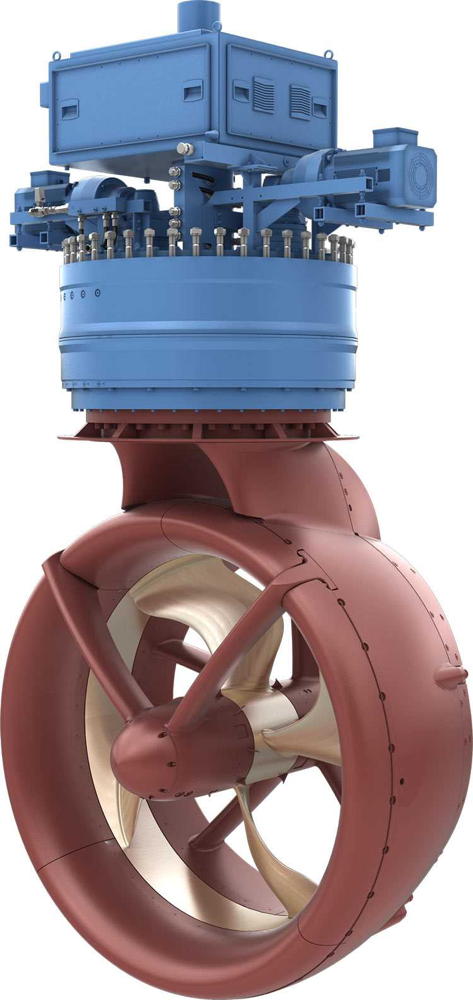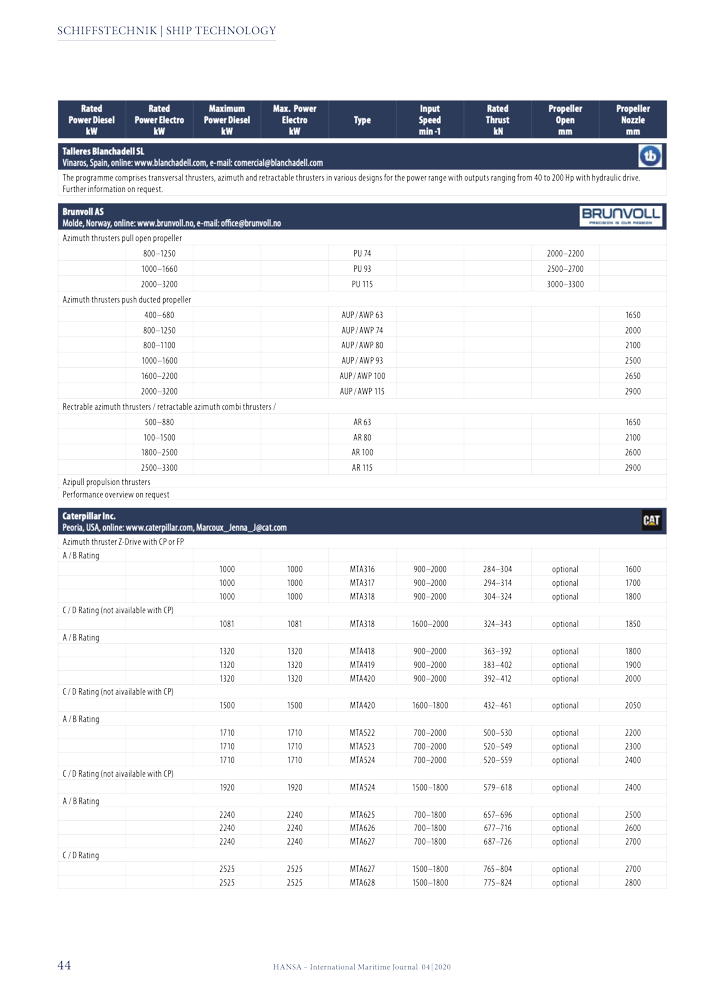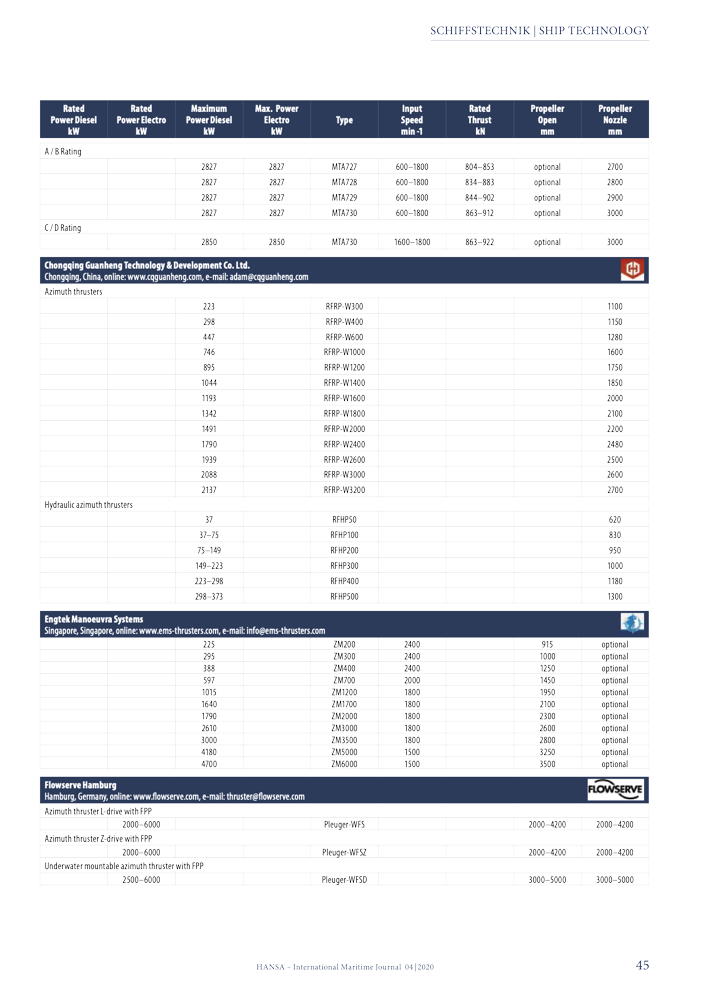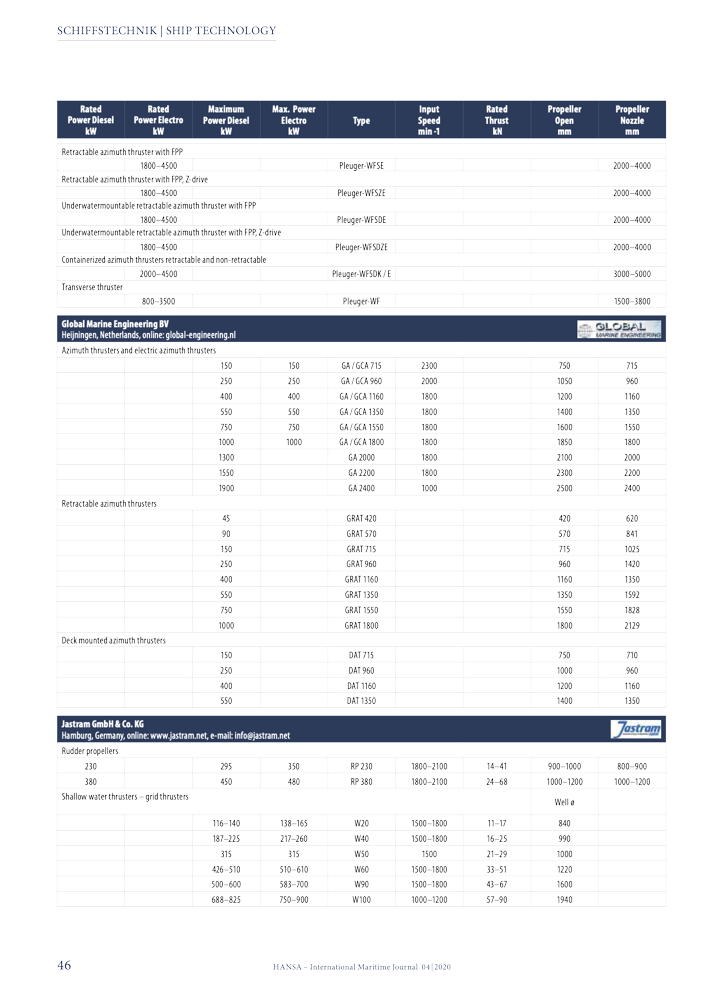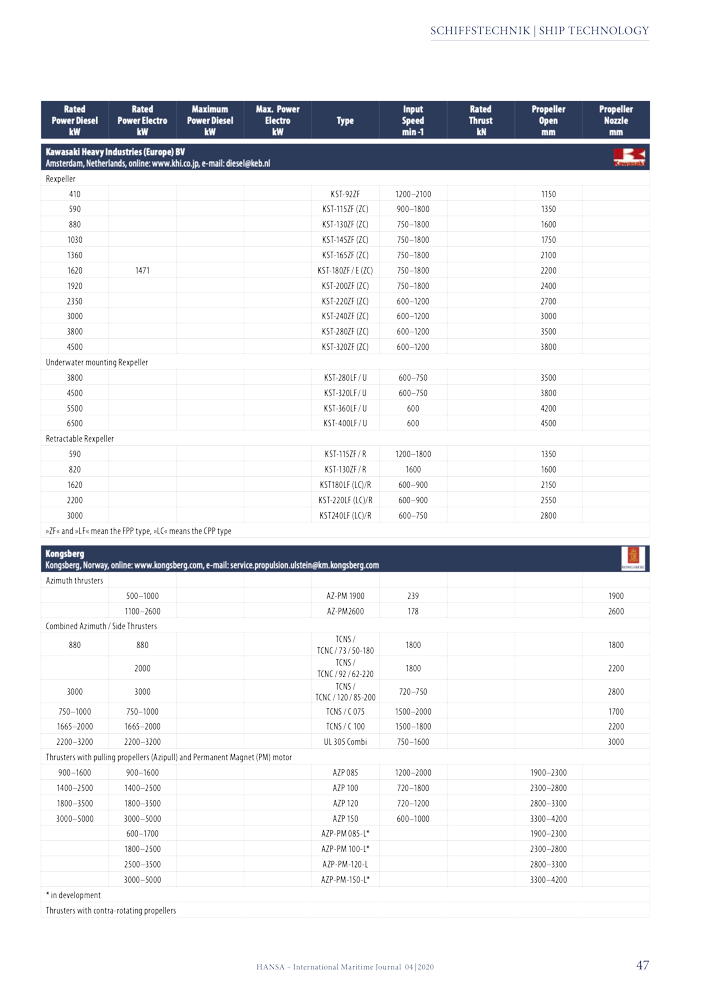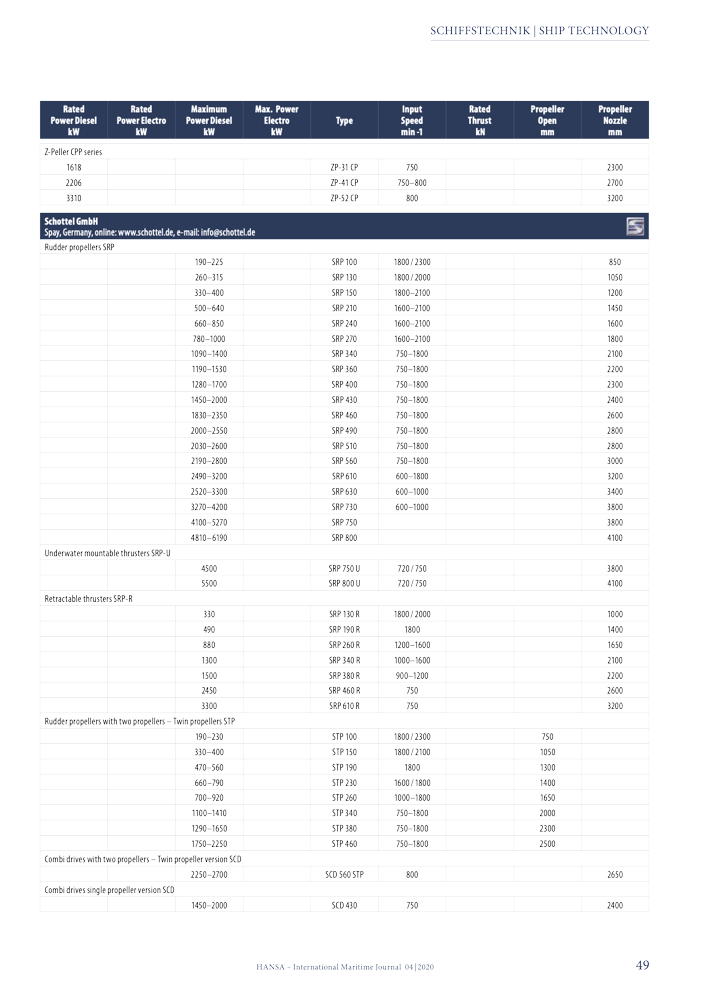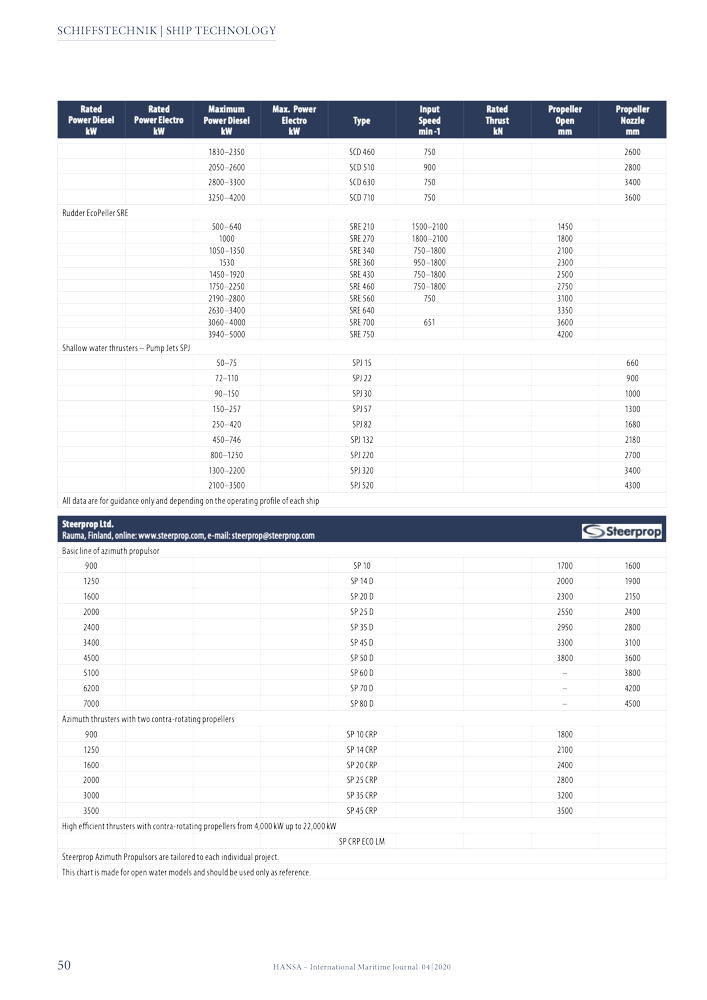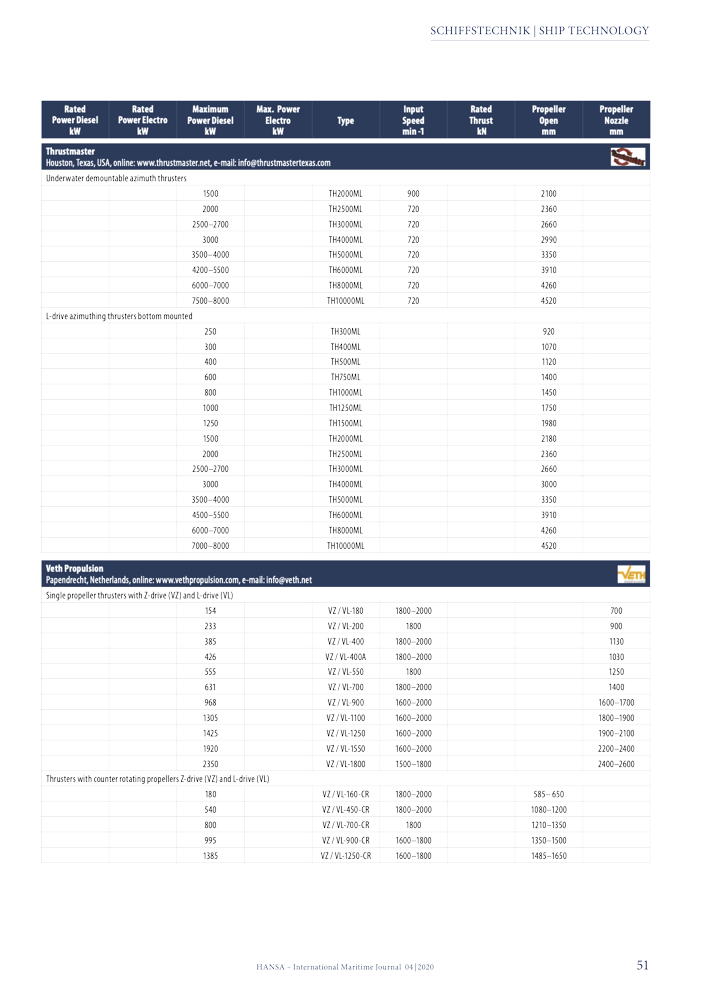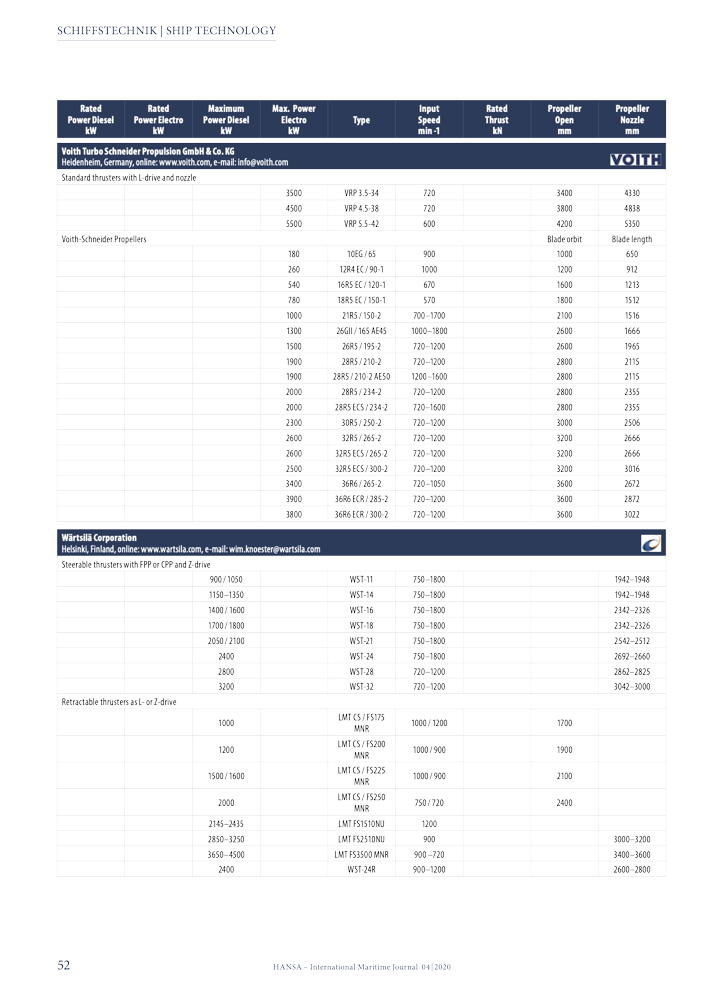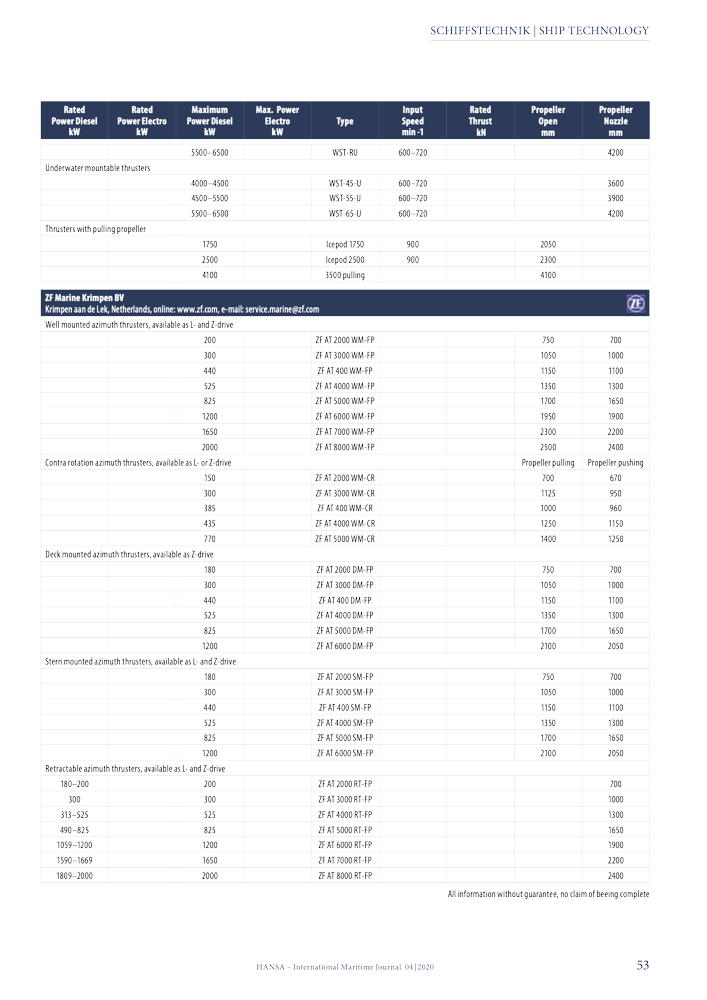A new player in the thruster market introduces a new product while the trend towards electrification pushes the market
When Norwegian company Kongsberg acquired the marine business of Rolls-Royce about a year ago, that deal also included the[ds_preview] segment of azimuth thrusters. The portfolio has hardly changed. But the Norwegians will introduce a complete new product to the market. The new Azipull-PM (AZP-PM) has an L-drive configuration using essentially the same underwater unit as the conventional Azipull, but with a vertical shaft permanent magnet (PM) motor integrated into a new upper unit. According to the company, the PM motor maintains a high efficiency over a wide speed range. There is a further small gain in mechanical efficiency by eliminating the upper gearbox«, Kongsberg stated.
Space requirements in the thruster room are reduced because the new thruster is compact, the PM motor lying within the diameter of the mounting flange giving a small footprint and avoiding the complication of a coupling and foundations for the separate motor of a conventional Z or C drive electric configuration.
First to be introduced to the market is the AZP-PM L-drive 120 size, rated at 2,500 kW to 3,500 kW continuous. This will be followed by two smaller frame sizes, 085 and 100, and one larger, the 150, so that this azimuth thruster series will in due course span a power range from 600 kW to 5,000 kW. They will cover the speed range up to 24kn.
The new product line is available as controllable pitch (CP) and fixed pitch (FP) propeller configurations.
However, the focus is currently less on the development of new products than on the optimization of existing ones, says Sebastian Jobs, Head of Sales Germany at Kongsberg. This applies in particular the control units for the propulsion systems. For the time being Kongsberg is satisfied with the range of products, he adds.
Demand for lower power
Schottel sees a constant share of azimuth thrusters in the market, with a slight upward trend. In particular, the German company reports a noticeable shift towards smaller power ranges, largely due to the slump in the oil and gas business. This gap is being offset by increasing newbuilding activity for for smaller ships, the company stated. Furthermore Schottel sees an increasing demand for ships with electric and hybrid propulsion concepts.
On the following pages, HANSA presents an overview of products and suppliers.





